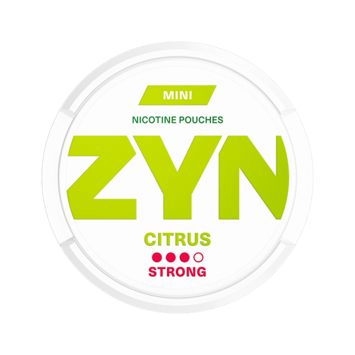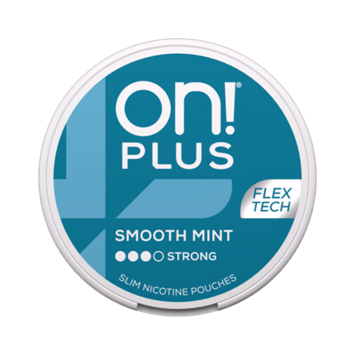Are nicotine pouches safe?
Philip Plainstein

With the rising popularity of nicotine pouches in the UK, many are left wondering about their safety. These small, tobacco-free products, placed between the lip and gum, have gained traction as a potential alternative to smoking. But do they truly offer a lower-risk option, or are there hidden dangers?
In this article, we will delve into the benefits and risks associated with nicotine pouches, supported by recent research and evidence. We will explore their impact on health, regulatory standings, and oral health aspects, providing a balanced view for those considering their use.
While nicotine pouches are marketed as a safer choice, their long-term effects remain uncertain. This section sets the stage for a comprehensive analysis, focusing on both immediate and long-term implications, particularly within the UK context.
Introduction to Nicotine Pouches
Nicotine pouches have gained significant attention in recent years, particularly in the UK, as a potential alternative to traditional smoking methods. These small, discreet products are designed to be placed between the lip and gum, offering a tobacco-free way to consume nicotine. Their rise in popularity can be attributed to their convenience and variety of flavours, which appeal to a broad audience seeking to reduce or quit smoking.
What Exactly Are Nicotine Pouches?
Nicotine pouches are innovative, smokeless products that deliver nicotine through the oral mucosa. They are typically small, rectangular sachets made of soft material, placed between the upper lip and gum. Unlike traditional tobacco products, nicotine pouches do not contain any tobacco, making them an attractive option for those looking to avoid the risks associated with tobacco use.
How They Work and Why They’re Popular
When a pouch is placed between the lip and gum, the nicotine is absorbed through the mouth tissues. This method is slower than smoking but provides a steady release of nicotine, which can help manage cravings. The popularity of nicotine pouches stems from their ease of use, discreet nature, and the availability of various flavours. They are often seen as a more convenient alternative to e-cigarettes and other nicotine replacement therapies.
The rise of nicotine pouches in the UK began around 2019, with their usage steadily increasing. They are particularly appealing to those who find traditional nicotine replacement methods, such as gums or patches, less convenient. The product’s portability and variety of flavours have contributed to their growing popularity, making them a common sight among those seeking to reduce their reliance on cigarettes.
Nicotine pouches are often compared to snus and other smokeless tobacco products but are distinct due to their tobacco-free composition. This distinction makes them an interesting option for regulatory bodies and health organizations, as they may offer a lower-risk alternative to traditional tobacco products.
As we delve deeper into the composition and safety of nicotine pouches in the following sections, it becomes clear that while they may offer certain advantages, they are not without risks. Understanding their ingredients, usage, and potential health implications is crucial for anyone considering them as part of their journey to quit smoking.
Composition and Ingredients of Nicotine Pouches
Nicotine pouches are intricate products, carefully crafted with specific ingredients to deliver nicotine effectively. Understanding their composition is key to assessing their benefits and risks.
Nicotine as the Active Agent
Nicotine is the primary active ingredient in these pouches, delivering its effects by interacting with the brain’s nicotinic acetylcholine receptors. This interaction can help manage cravings and withdrawal symptoms, making them a popular choice for those seeking to quit smoking.
The nicotine content in pouches is measured meticulously, typically ranging between 2mg to 10mg per pouch. This range is comparable to nicotine lozenges, ensuring a controlled release of the substance.
The Role of Non-Tobacco Substrates and Flavourings
Approximately 80-90% of a nicotine pouch is composed of water and microcrystalline cellulose, a common filler used in pharmaceutical products. These substrates provide the necessary structure and texture to the pouch, ensuring a steady nicotine release.
Flavourings play a crucial role in enhancing the user experience. Added at food-grade standards, they come in various options like mint and fruity notes, making the pouches more appealing without the need for tobacco. This not only improves palatability but also helps in reducing the perception of harshness, potentially lowering the risk compared to traditional tobacco products.
| Ingredient | Role | Percentage |
|---|---|---|
| Nicotine | Active agent for craving relief | 2-10mg per pouch |
| Water | Hydration and texture | ~80-90% |
| Microcrystalline Cellulose | Structural integrity | ~80-90% |
| Flavourings | Enhance user experience | Varies |
The formulation of nicotine pouches is designed to offer a non-combustible alternative, delivering nicotine without the harmful effects of smoke. This specific form and content protocol positions them uniquely in the nicotine market, providing users with a discreet and convenient option.
Legal and Regulatory Landscape in the United Kingdom
Nicotine pouches operate within a unique regulatory environment in the UK, distinct from traditional tobacco products. This section explores the current policies and licensing framework governing their use.
Current Policies and Licensing Framework
Nicotine pouches are regulated under the General Product Safety Regulations (GPSR) rather than the Tobacco and Related Products Regulations (TRPR). This classification means they are treated differently from e-cigarettes and traditional tobacco products, which fall under TRPR. The GPSR focuses on ensuring product safety without the specific oversight applied to tobacco-related items.
While e-cigarettes and tobacco products face strict regulations, nicotine pouches have more flexible guidelines. However, there are calls for more specific regulations as their popularity grows. Current gaps include varying age restrictions and nicotine strength limits, which can vary by manufacturer.
Organizations like Action on Smoking and Health (ASH) have raised concerns about these gaps. They emphasize the need for clearer guidelines to protect young users and ensure product safety. Understanding this legal status is crucial for assessing both availability and associated risks.
Future regulatory changes could offer better protection for users, particularly young people. As discussions evolve, the balance between product accessibility and risk management will be key. This section highlights the importance of clear regulations in shaping the future of nicotine pouches in the UK.
Investigating are nicotine pouches safe: Evidence and Perspectives
As the debate over nicotine pouches continues, their safety remains a top concern for many. While these products offer a tobacco-free alternative to smoking, understanding their immediate and long-term effects is crucial for informed decision-making.
Evaluating Immediate Oral and Systemic Effects
Research indicates that nicotine pouches can cause mild gum irritation and mouth sores in some users. These effects are typically short-lived and less severe compared to traditional smoking, which is known to cause significant oral health issues. However, the systemic absorption of nicotine can lead to increased heart rates and blood pressure, similar to other nicotine products.
Long-Term Safety Considerations
Long-term data on nicotine pouches is still emerging, but studies suggest potential risks similar to those associated with long-term use of smokeless tobacco products. Nicotine’s addictive properties and its impact on the brain and body highlight the need for caution. While the design of nicotine pouches may reduce certain risks compared to smoking, the lack of comprehensive long-term studies leaves many questions unanswered.
Current research emphasizes the importance of further investigation to fully understand the health implications of nicotine pouch use. As more studies are conducted, a clearer picture of their safety profile will emerge, helping users make informed choices.
Health Implications and Oral Health Concerns
Understanding the health implications of nicotine pouches is crucial for anyone considering their use. While these products avoid the carcinogens found in tobacco, they can still have notable effects on oral health.
Potential Impact on Gums and Teeth
Nicotine pouches may cause gum irritation, recession, and tooth sensitivity, particularly with prolonged use. These side effects are similar to those seen with other orally administered nicotine products. Studies have shown that 75% of participants in one study reported oral lesions, highlighting the need for awareness.
Comparisons with Nicotine Replacement Therapies
Compared to nicotine gum and lozenges, the oral effects of pouches are comparable but less severe than smoking. While nicotine itself isn’t a carcinogen, prolonged exposure near the gums can lead to localised issues. Further research is essential to fully understand the long-term oral health outcomes.
| Oral Health Effect | Frequency | Comparison to Smoking |
|---|---|---|
| Gum Irritation | 48% | Less severe |
| Mouth Sores | 37% | Significantly lower |
| Tooth Sensitivity | 20% | Comparable to NRTs |
While nicotine pouches offer a lower-risk alternative to smoking, their impact on oral health shouldn’t be overlooked. Users should weigh both immediate and long-term risks when deciding to use these products.
Understanding Nicotine Addiction and Dependency Risks
Nicotine pouches, while offering a tobacco-free alternative, present unique challenges regarding addiction. As their popularity grows in the UK, it’s crucial to understand how nicotine affects the brain and the potential for dependency.
How Nicotine Affects Your Brain
Nicotine interacts with nicotinic receptors in the brain, triggering the release of dopamine, a neurotransmitter associated with pleasure. This interaction creates a feeling of satisfaction, encouraging repeated use and forming a cycle that can lead to addiction.
The biological basis of nicotine addiction lies in its ability to alter brain chemistry. Over time, the brain becomes dependent on nicotine to maintain normal functioning, making it challenging to quit despite potential health risks.
Short-Term Pleasure vs. Long-Term Dependency
The immediate effects of nicotine include heightened alertness and relaxation, which can be appealing. However, these short-term benefits come with a significant long-term risk of developing a nicotine dependency.
Compared to cigarettes, nicotine pouches deliver the substance through the mouth tissue, which can lead to faster absorption into the bloodstream. This rapid delivery may intensify the addictive potential, making it harder for users to cut down or quit.
Withdrawal Effects and Brain Changes
Stopping nicotine use can result in withdrawal symptoms such as irritability and anxiety, as the brain’s reward system readjusts. This underscores the deep impact nicotine can have on brain function and behavior.
Scientific studies highlight that while nicotine pouches may reduce certain health risks associated with smoking, the risk of addiction remains significant. Adolescents and young adults are particularly vulnerable due to the ongoing development of their brains.
Understanding these risks is essential for anyone considering nicotine pouches. For those concerned about dependency, consulting healthcare professionals or exploring alternative cessation methods can provide a safer path forward.
For more guidance on managing nicotine intake, visit our resource on how many nicotine pouches to use.
Comparing Nicotine Pouches to Other Nicotine Products
Nicotine pouches stand out as a unique option among nicotine products, offering distinct advantages and differences compared to traditional alternatives. Understanding these differences helps users make informed choices.
Pouches Versus Cigarettes and E-Cigarettes
Nicotine pouches differ significantly from cigarettes and e-cigarettes. Unlike cigarettes, pouches deliver nicotine without combustion, eliminating harmful chemicals from smoke. This reduces exposure to carcinogens, making them a potentially lower-risk option. E-cigarettes, while also smoke-free, involve inhalation, which can irritate the lungs. Pouches provide a discreet, spit-free experience, appealing to those who prefer a more subtle method.
Nicotine Pouches Versus Chewing Tobacco
Chewing tobacco contains tobacco and carcinogens, linked to oral cancer and gum disease. Nicotine pouches, being tobacco-free, avoid these risks. Both deliver nicotine through oral tissues but differ in composition and health impact. Pouches offer a modern alternative with fewer harmful substances.
| Product | Nicotine Delivery | Health Risks |
|---|---|---|
| Cigarettes | Combustion | High (carcinogens) |
| E-Cigarettes | Inhalation | Moderate (lung irritation) |
| Chewing Tobacco | Oral absorption | High (oral cancer risk) |
| Nicotine Pouches | Oral absorption | Lower (no combustion) |
Nicotine pouches offer a middle ground, combining the benefits of lower risk with a user-friendly design. While not risk-free, they provide a safer alternative to smoking and chewing tobacco, making them a viable choice for those seeking to reduce harm.
The Role of Nicotine Pouches in Smoking Cessation
Nicotine pouches have emerged as a promising tool for smokers aiming to quit, offering a tobacco-free alternative that’s gaining traction in the UK. Their design allows for discrete use, making them an attractive option for those seeking to reduce their reliance on cigarettes.
Evaluating Benefits as a Harm Reduction Tool
Research indicates that nicotine pouches can effectively reduce cravings and ease withdrawal symptoms, making them a viable option for smoking cessation. They deliver nicotine steadily through the mouth tissues, providing relief without the need for combustion. This method not only lowers exposure to harmful carcinogens found in cigarettes but also offers a simpler alternative to traditional nicotine replacement therapies like gum or patches.
Studies have shown that nicotine pouches can deliver nicotine quickly, similar to existing smokeless products, despite having lower nicotine content. This rapid delivery can help manage cravings more effectively for some users. Additionally, their lower levels of harmful constituents compared to snus products make them a safer choice for those looking to quit smoking.
However, it’s important to approach their use with caution. While they may aid in reducing health risks associated with smoking, the risk of addiction remains. Users should be mindful of their nicotine intake to avoid dependency. Consulting with healthcare professionals can provide personalized advice and ensure a safer transition to these products.
Current findings suggest that nicotine pouches are a valuable tool in the journey to quit smoking. As research continues, their role in harm reduction is likely to become even more defined. For now, they offer a practical and less harmful alternative for many smokers in the UK.
For more information on the role of nicotine pouches in smoking cessation, visit the CDC’s resource page on nicotine pouches.
Emerging Research and Future Perspectives
As nicotine pouches gain popularity in the UK, scientific interest in their effects and potential benefits continues to grow. Emerging studies are shedding light on their safety and efficacy, though much remains to be discovered.
Current Studies and Evidence Gaps
Recent research highlights the lower-risk profile of nicotine pouches compared to traditional tobacco products. However, there are significant gaps in understanding their long-term health implications. Studies are ongoing to assess their impact on oral health and systemic effects, which are crucial for establishing their safety profile.
The Need for Further Research
While current findings suggest that nicotine pouches may offer a safer alternative to smoking, more research is needed. Clinical trials are focusing on nicotine delivery methods and content levels to better understand their effects. Population-based studies are also essential to track long-term health outcomes and usage patterns.
| Aspect of Research | Current Findings | Future Focus |
|---|---|---|
| Nicotine Delivery | Steady release through oral tissues | Optimizing delivery for reduced addiction risk |
| Oral Health Impact | Mild irritation and sores reported | Long-term effects on gums and teeth |
| Addiction Potential | Lower than cigarettes but present | Strategies to minimize dependency |
Future research may lead to regulatory changes and product improvements, ensuring safer and more effective options for users. As data emerges, it will shape public health perspectives and guide informed decisions.
In conclusion, while nicotine pouches show promise as a harm reduction tool, ongoing research is vital. By addressing current gaps, future studies can redefine strategies to help smokers quit and reduce health risks associated with nicotine use.
Social and Cultural Impacts in the UK
Nicotine pouches have become a cultural phenomenon in the UK, particularly among younger generations. Their rise in popularity is evident in social settings like schools, clubs, and on social media platforms such as TikTok and Instagram. This trend is concerning, as it highlights the potential for peer influence and a gateway effect, especially among young people.
Trends Among Young People and Peer Influence
The discreet nature and appealing flavours of nicotine pouches have made them a trend among young people. Recent surveys show that 6% of 16-19-year-olds in England have tried these products, with usage increasing by 1% from 2022 to 2023. Peer influence plays a significant role, with many young users drawn in by the social acceptance and ease of use of these products.
Marketing Tactics and Public Perception
Attractive marketing strategies, including flavoured varieties and sleek packaging, have contributed to the popularity of nicotine pouches. However, public debates have sparked concerns about their potential to act as a gateway to smoking, particularly among non-smokers. The media has covered these issues extensively, raising awareness about the risks associated with nicotine exposure and the impact on adolescent brain development.
The cultural acceptance of nicotine pouches is growing, with many users viewing them as a safer alternative to cigarettes. However, the lack of long-term data on their health effects has led to calls for stricter regulations. As public perception evolves, it may influence future regulatory measures and health messaging, shaping the role of nicotine pouches in UK culture.
Final Thoughts on Nicotine Pouches and Your Health
Nicotine pouches present a complex landscape of benefits and risks, particularly in the context of smoking cessation. While they offer a less harmful alternative to traditional tobacco products, their overall safety profile remains a subject of debate.
Research indicates that these products can effectively reduce smoking-related health risks by eliminating combustion-related harms. However, users must remain vigilant about potential oral side effects, such as gum irritation and mouth sores, which affect a significant portion of users. The addictive nature of nicotine also poses long-term dependency risks, particularly for younger individuals.
Current evidence underscores the need for further long-term studies to fully understand the health implications of nicotine pouch use. Regulatory challenges in the UK, including inconsistent age restrictions and nicotine content limits, add to the complexity. Social trends, particularly among young people, highlight the importance of balanced public health messaging.
For those considering nicotine pouches as a cessation tool, consulting healthcare professionals is advisable. A better understanding of nicotine content and user experiences can guide safer practices. As research evolves, so too will our understanding of these products’ role in public health.
In conclusion, while nicotine pouches offer a promising harm reduction tool, their use should be approached with caution. Continued research and informed discussions are crucial to shaping policies that protect public health while aiding smokers in their journey to quit.









